*NURSING > STUDY GUIDE > NR 511 Week 1 Study Guide/ NR 511 Week 1 Exam Study Guide (All)
NR 511 Week 1 Study Guide/ NR 511 Week 1 Exam Study Guide
Document Content and Description Below
NR 511 Week 1 Study Guide/ NR 511 Week 1 Exam Study Guide Week 1 1. Define d ysician providers Recognized universally and also provide a logical means to be able to track healthcare data, tr... ends, and outcomes. Each service or procedure is represented by a five-digit code that is presented in six sections, including 1. Evaluation & Management 2. Anesthesiology 3. Surgery 4. Radiology5. Pathology 6. Medicine International Classification of Diseases (ICD) system: we are in the tenth revision of the system, and, therefore, the classification system is known as ICD-10 ICD-10 codes are shorthand for the patient’s diagnoses, which are used to provide the payer information on the necessity of the visit or procedure performed. This means that every CPT code must have a diagnosis code that corresponds. 6. Discuss how specificity, sensitivity & predictive value contribute to the usefulness of the diagnostic data When we describe the specificity of a test, we are referring to the ability of the test to correctly detect a specific condition. If the patient has the condition but testing is negative, we describe this as a false negative. If the patient does not have the condition but the test result is positive, this is considered to be a false positive test. When a test is very sensitive, we mean it has few false negatives. The higher the sensitivity, the lesser the likelihood of a false negative. A sensitivity of 99% means that it is very unlikely for a false negative result. Predictive value is the likelihood that the patient actually has the condition and is, in part, dependent upon the prevalence of the condition in the population. If a condition is highly likely, a positive test result is more likely to be accurate. If a condition is very unlikely, a positive test needs to be questioned and perhaps additional testing would need to be done. 5 things to consider before ordering a test: cost, convenience, sensitivity, specificity, risk of missing a condition (predictive value) 7. Discuss the elements that need to be considered when developing a plan Evidence based care: providing care and making treatment and screening choices based on current research findings. Generally, EBP refers to using research findings from multiple studies that are convincing enough that a consensus is formed recommending the findings be used for clinical decision-making or practice guidelines. EBP also involves inclusion of patient and provider preferences, patient values, and cultural considerations in the clinical decision-making process. Guidelines should be followed in the majority of cases unless there is a clear rationale for deviating from them to serve the particular needs of the patient. Elements include clinical state and circumstances, patient’s preferences and actions, research evidence, and clinical expertise 8. Discuss a minimum of three purposes of the written history and physical in relation to the importance of documentation It is an important reference document that gives concise information about a patient's history and exam findings. It outlines a plan for addressing the issues that prompted the visit. This information should be presented in a logical fashion that prominently features all data immediately relevant to the patient's condition. It is a means of communicating information to all providers who are involved in the care of a particular patient. It is an important medical-legal document. It is essential in order to accurately code and bill for services. 9. Accurately document why every procedure code must have a corresponding diagnosis code Every procedure code needs a diagnosis to explain the necessity whether the code represents an actual procedure performed or a nonprocedural encounter like an office visit. Understanding and accurately recording procedure and diagnosis codes are necessities in order for you or your practice to get reimbursed. 10. Correctly identify a patient as new or established given the historical information A new patient is one who has not received professional service from a provider from the same group practice within the past 3 years. Conversely, an established patient has received professional service from a provider of your office within the last 3 years. 11. Identify the 3 components required in determining an outpatient, office visit E&M code Self-directed learning: investigate more about the topics you are unsure about. [Show More]
Last updated: 2 years ago
Preview 1 out of 4 pages

Buy this document to get the full access instantly
Instant Download Access after purchase
Buy NowInstant download
We Accept:

Reviews( 0 )
$6.00
Can't find what you want? Try our AI powered Search
Document information
Connected school, study & course
About the document
Uploaded On
Mar 18, 2021
Number of pages
4
Written in
Additional information
This document has been written for:
Uploaded
Mar 18, 2021
Downloads
0
Views
77



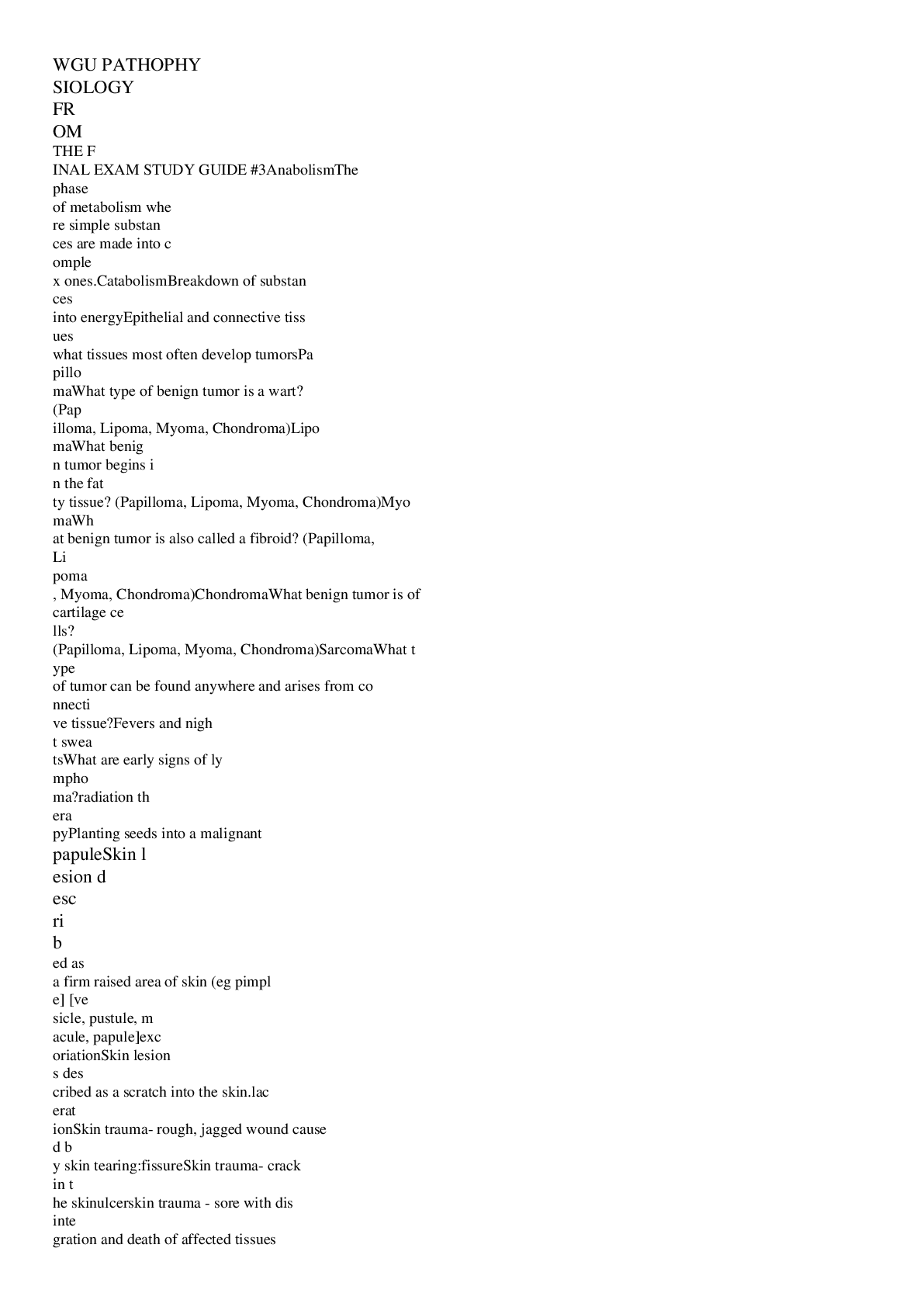






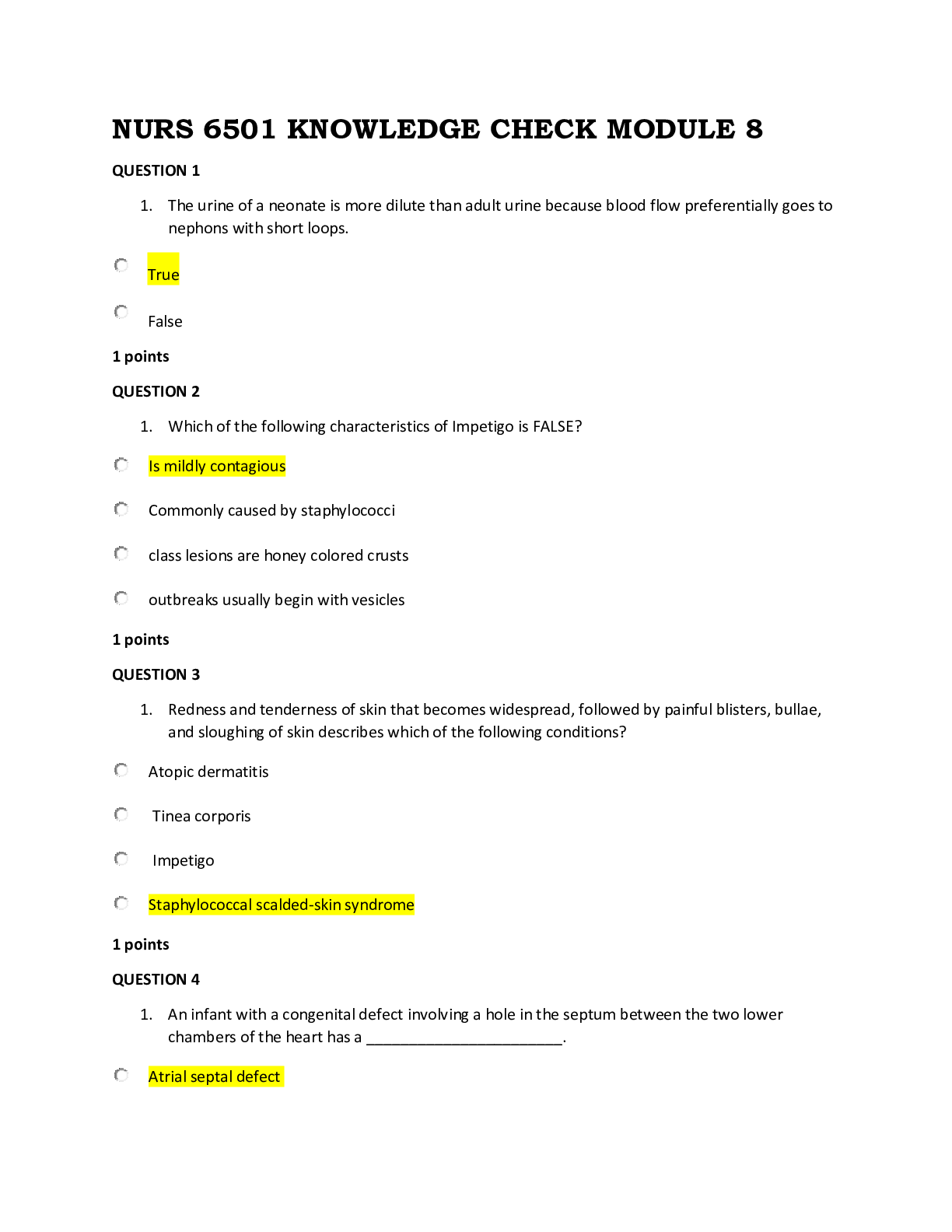
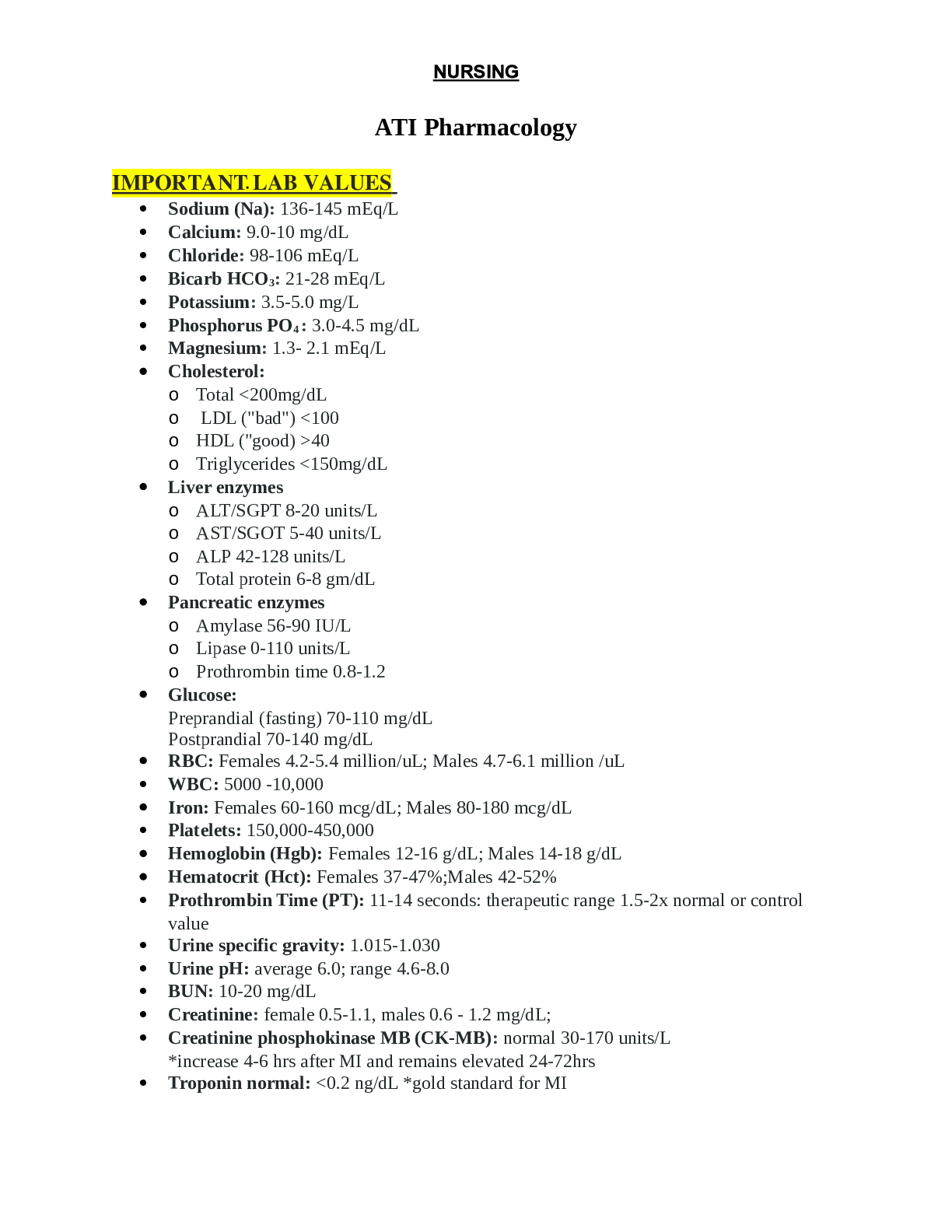
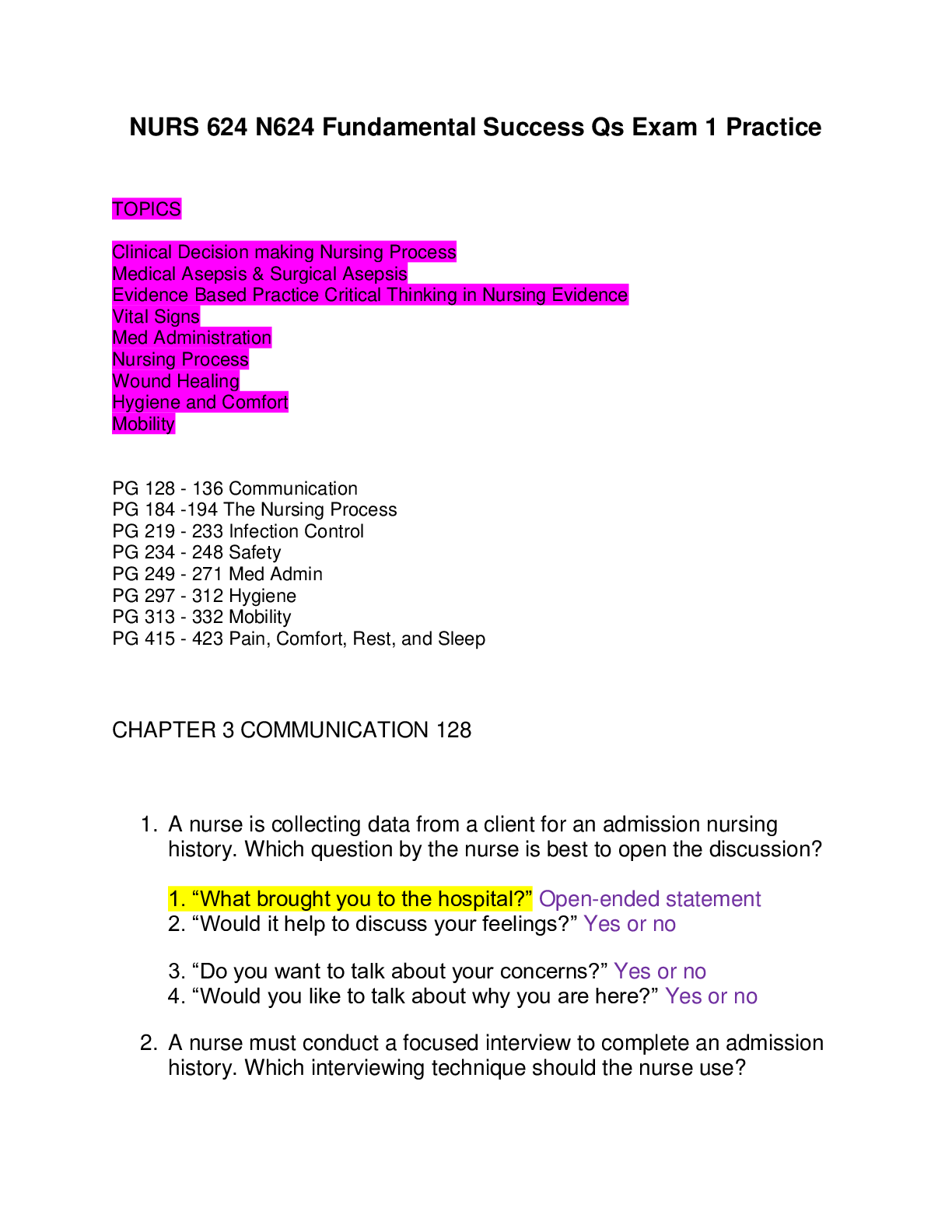
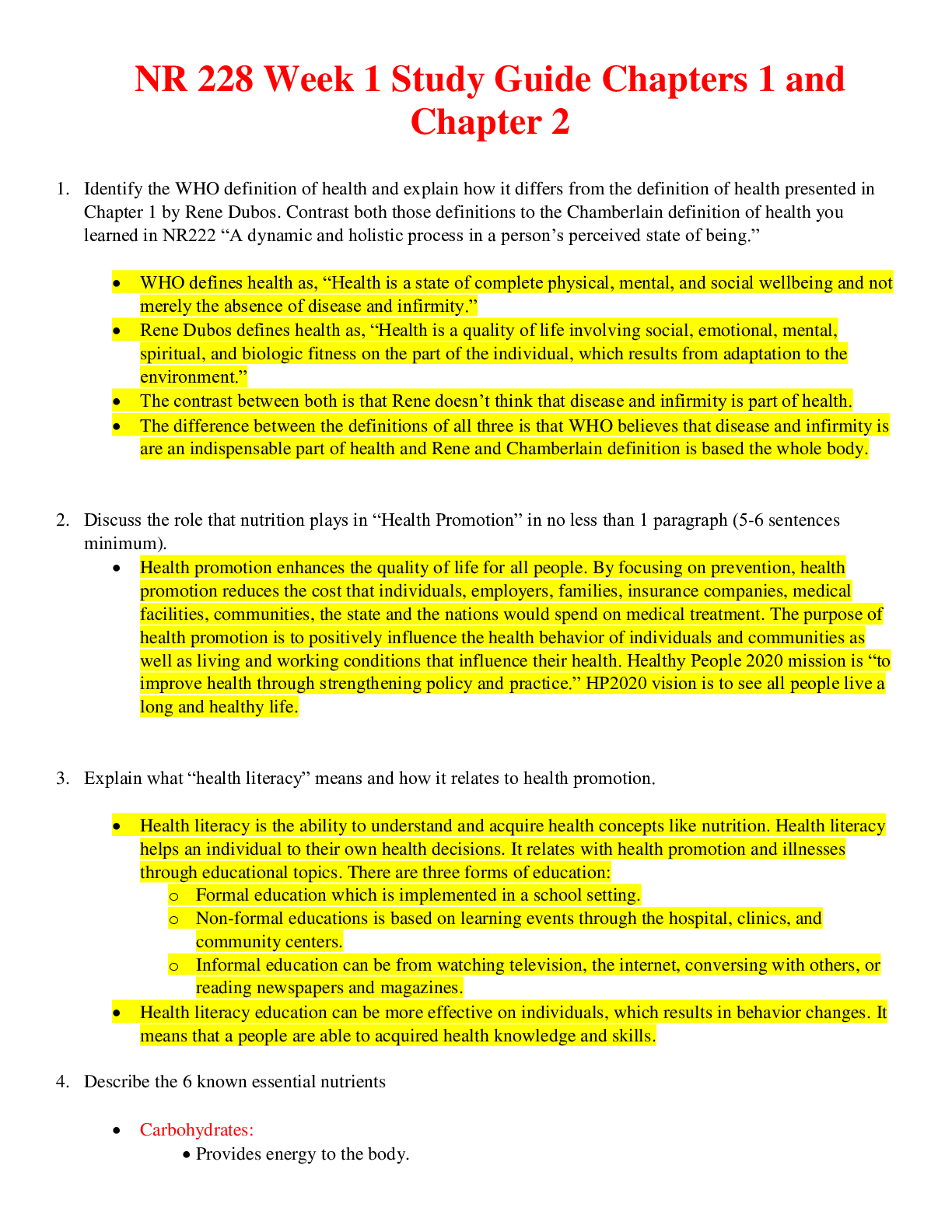
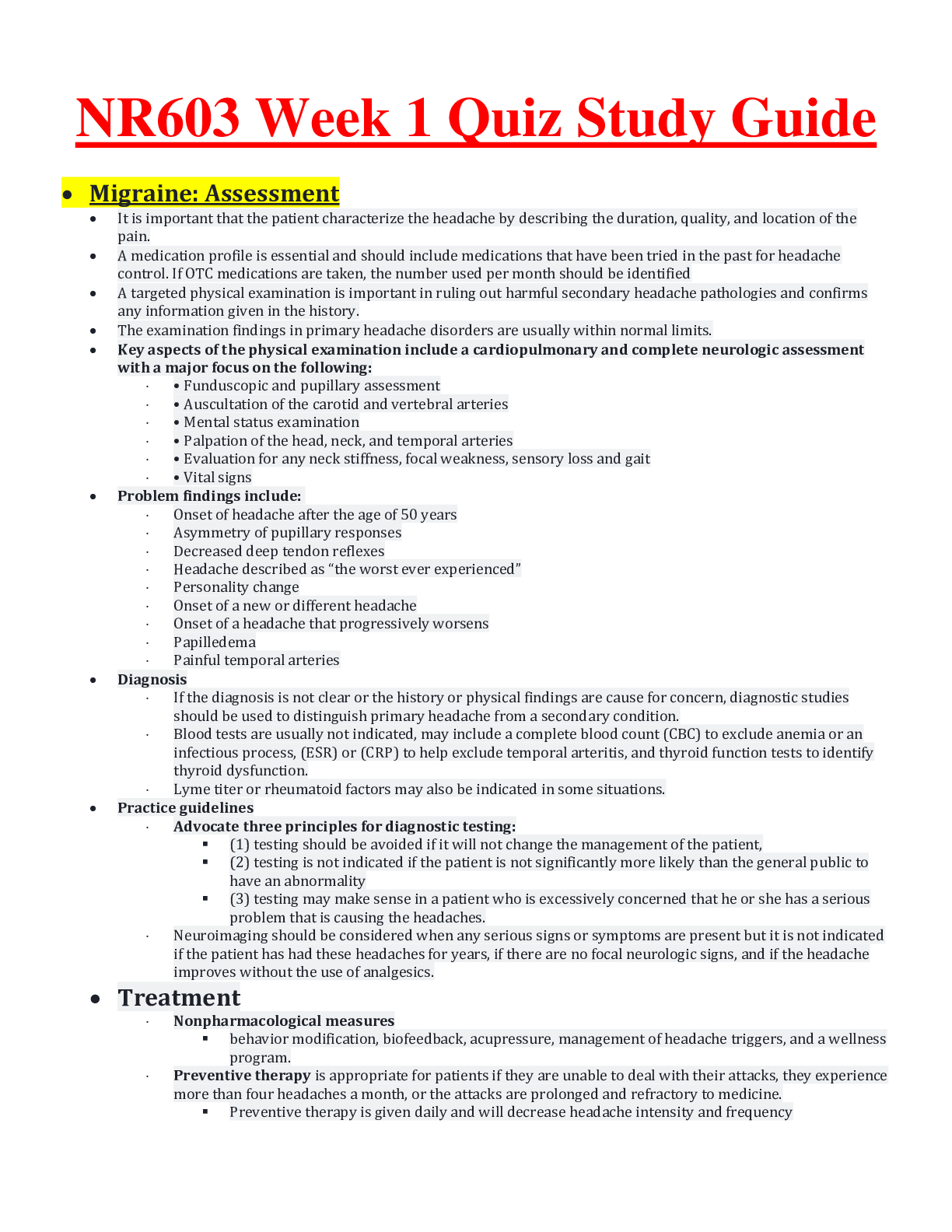

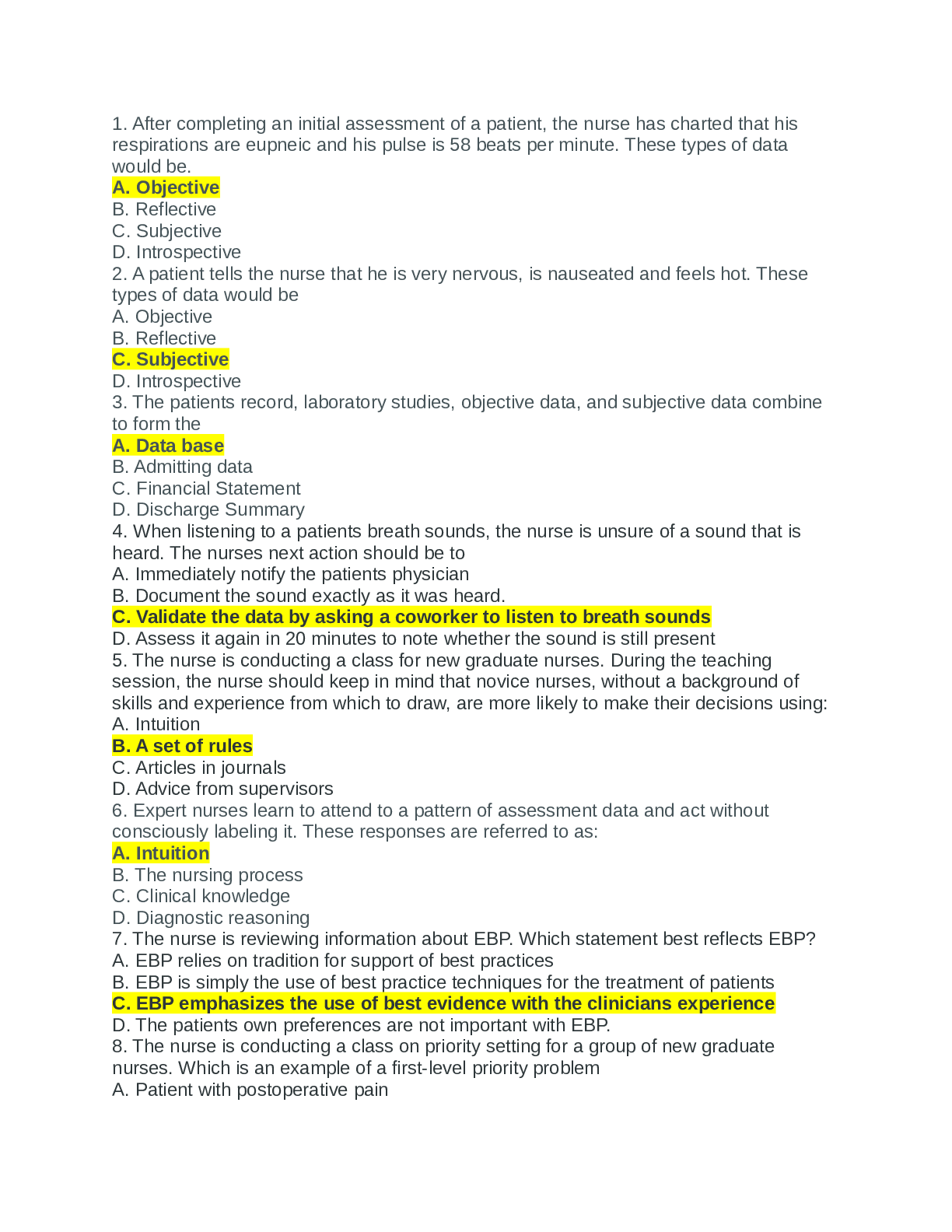
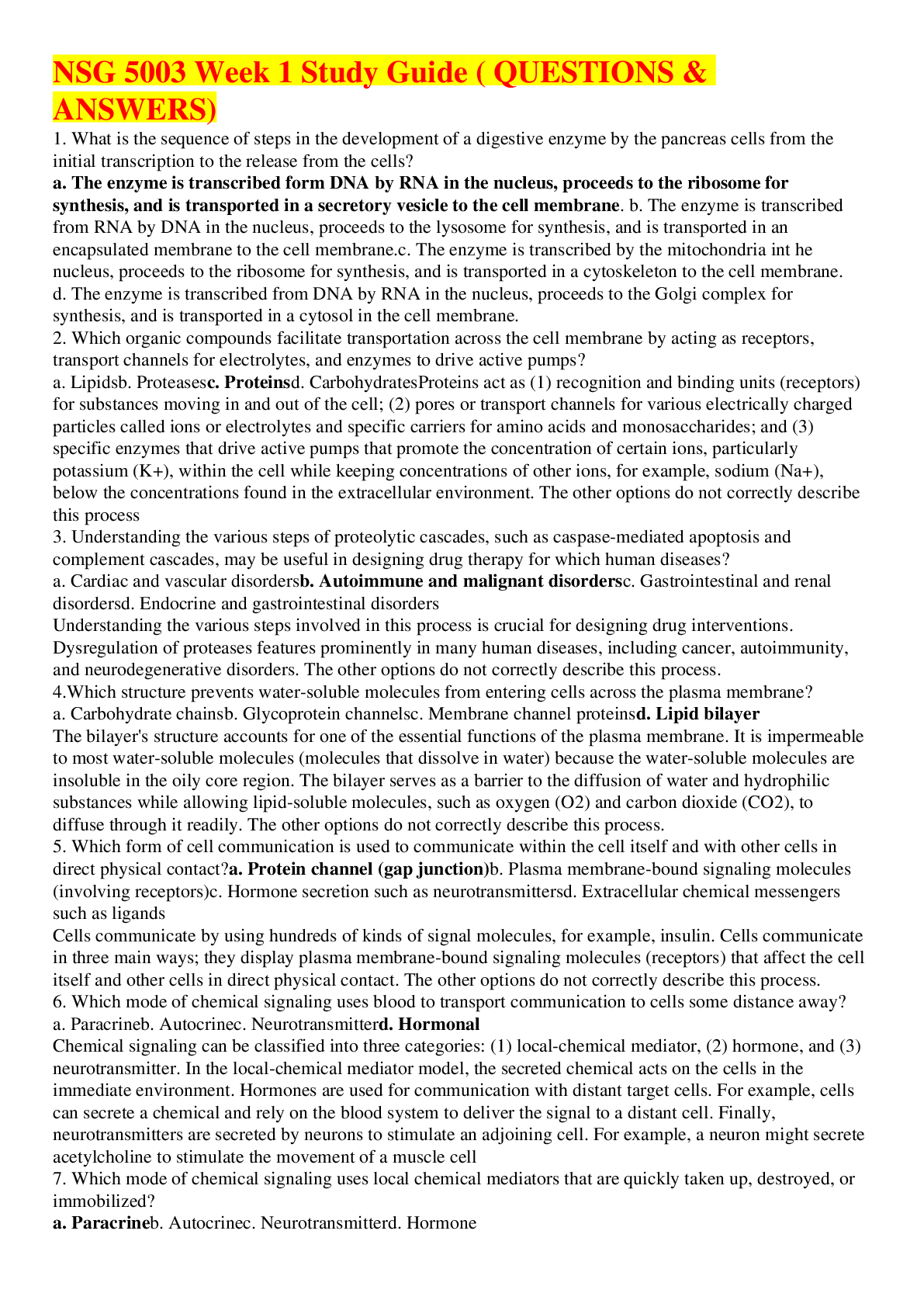

.png)
.png)





